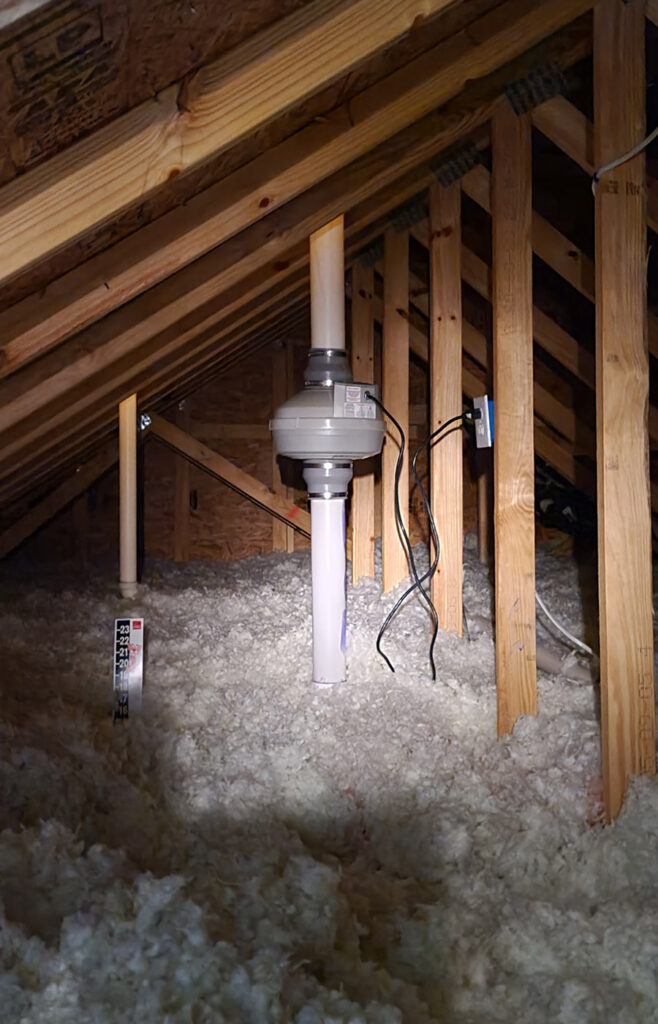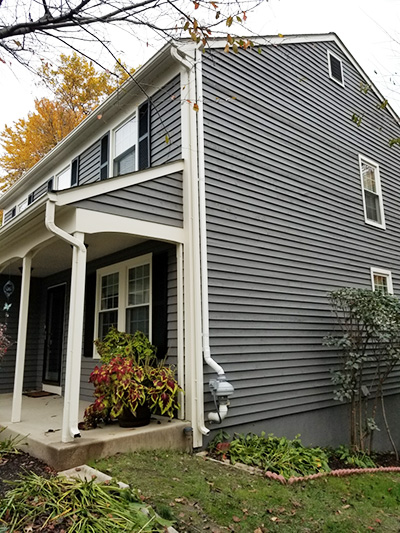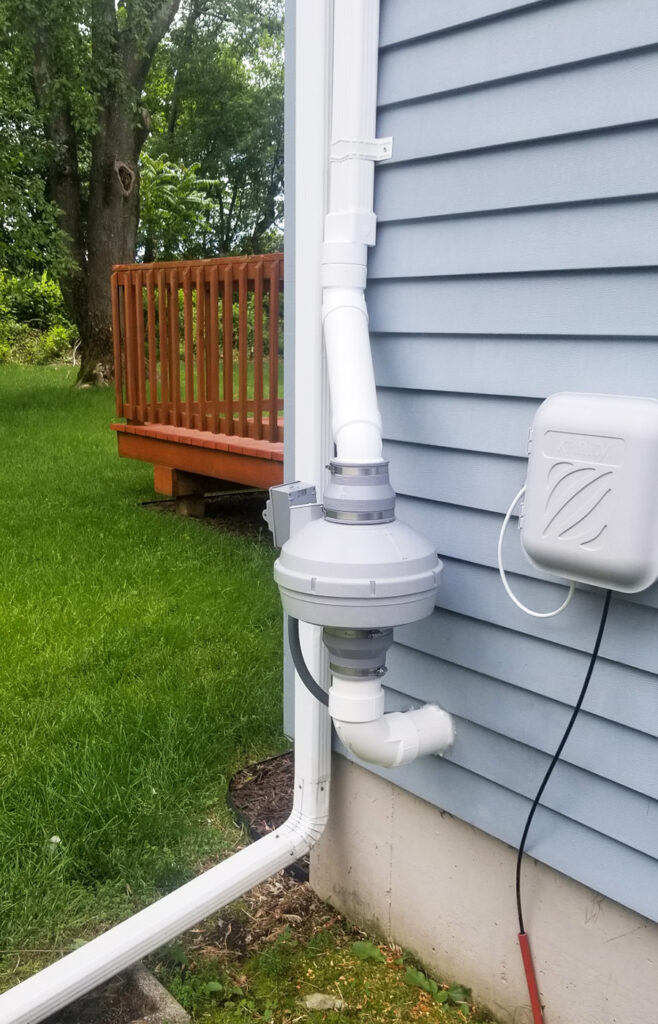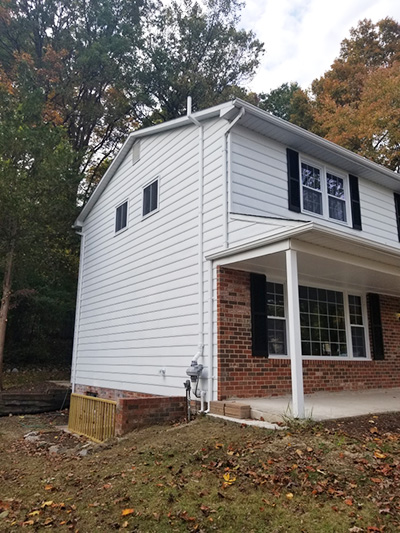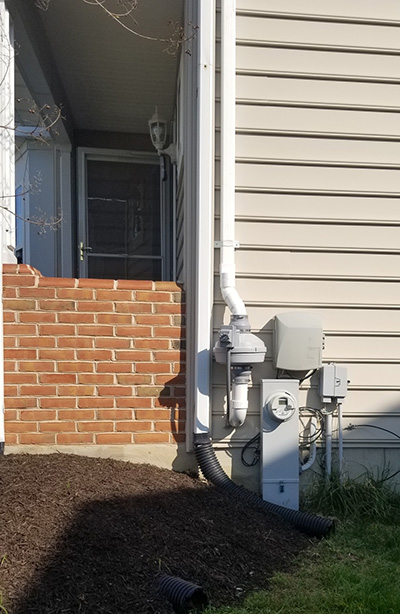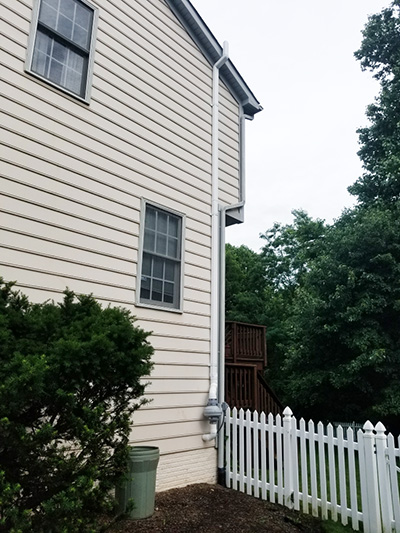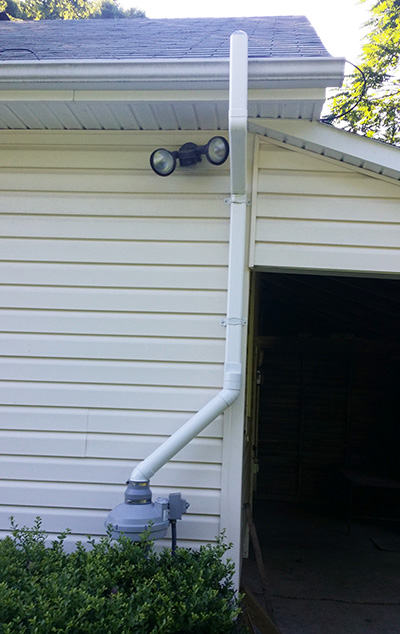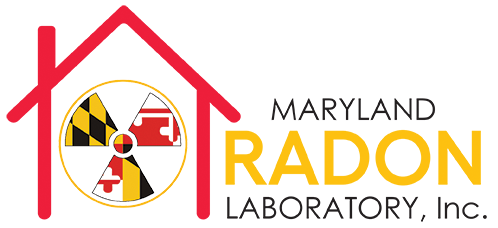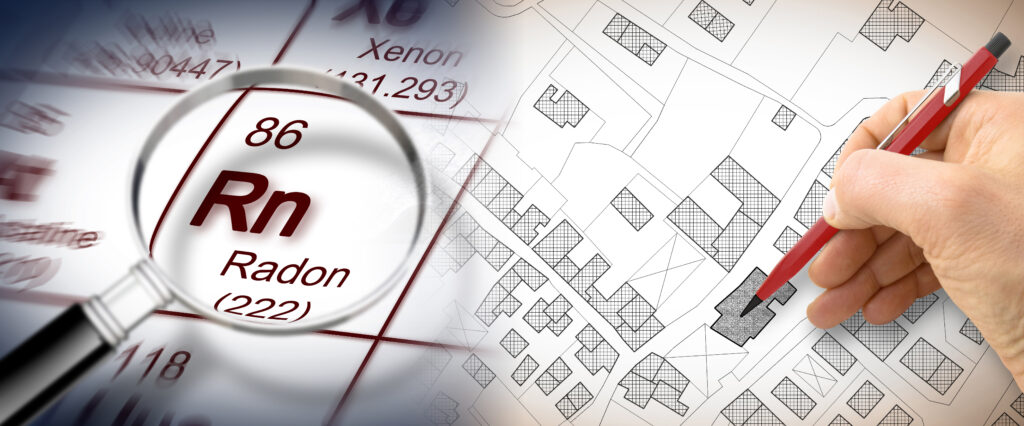
What Is Radon?
Radon – number 86 on the periodic table of elements – is a naturally-occurring, radioactive gas. Radon is produced beneath the surface of the earth during the breakdown of radioactive elements such as thorium and uranium. Radon is generally present in the atmosphere in trace amounts, however it disperses quickly outdoors.
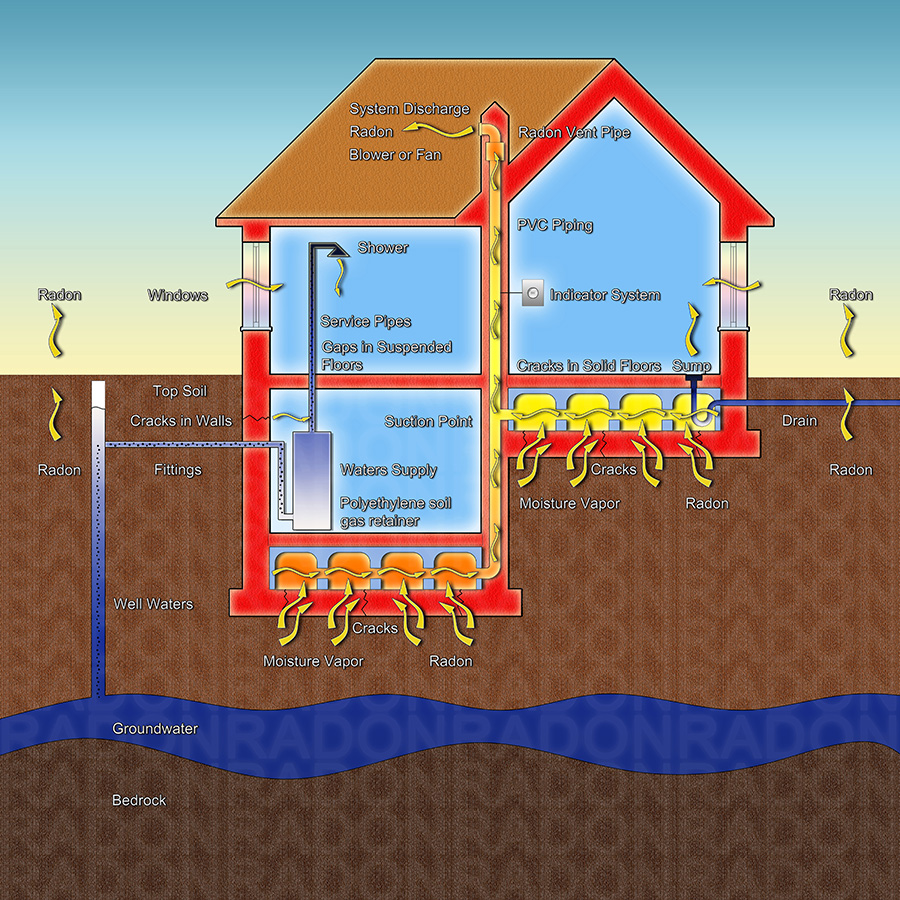
When Does Radon Need Remediation?
When trapped indoors, radon levels can build and pose a serious health threat over time. Radon can enter an enclosed space through small cracks in a structure’s foundation. Once inside the building, radon levels can become high enough to cause lung cancer. In fact, radon is considered a Class A carcinogen, and is second only to smoking as a leading cause of lung cancer in the U.S. It is estimated by the EPA that more than 20,000 people die from radon-related lung cancer each year in the United States alone.
How Do I Know if My Property is Safe from Radon Gas?
Because radon is colorless and odorless, the only way to know if a building has dangerous levels of radon is to have it tested by a certified radon professional. Using specialized equipment, radon professionals sample the air from inside the building over a period of approximately 48 hours. When levels are above 4 pCi/L, remediation is recommended.
Does Maryland Have High Levels of Radon Gas?
According to the Environmental Protection Agency, many parts of Maryland (particularly throughout central Maryland) are listed as being in Zone 1, or “predicted average indoor screen levels greater than 4 pCi/L (picocuries per liter of air).” The map below, created by the EPA, shows which areas in Maryland are located in Zone 1 (indicated in red).
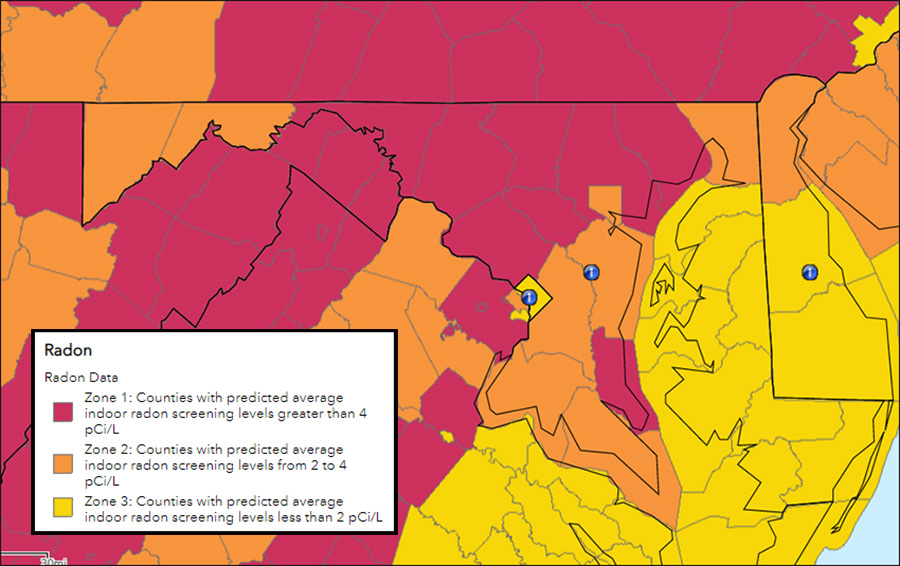
Do I Need to Have My House Tested for Radon?
Often when buying or selling a home, a radon test will be requested. Although not required in the state of Maryland – EXCEPT in Montgomery County – radon testing is recommended. If elevated levels of radon are present, remediation may be necessary to reduce it to an acceptable level. As a home or property owner, even if you are not looking to buy or sell, having your structure checked for radon safety is a good idea.
How Is Radon Removed?
In order to remove radon gas BEFORE it enters a structure, a process called subslab suction (or subslab depressurization) is used. Radon can be reduced by one of four different types of soil suction: subslab suction, sump-hole suction, drain-tile suction, or block-wall suction. In each case, one or more pipes are inserted below the foundation. A radon vent fan is connected to these pipes, drawing the radon gas from below the surface and releasing it into air outside. As the photos below show, the harmful radon gas is drawn into pipes in a basement, crawl space, or below the foundation, which are diverted outside the structure and released.
